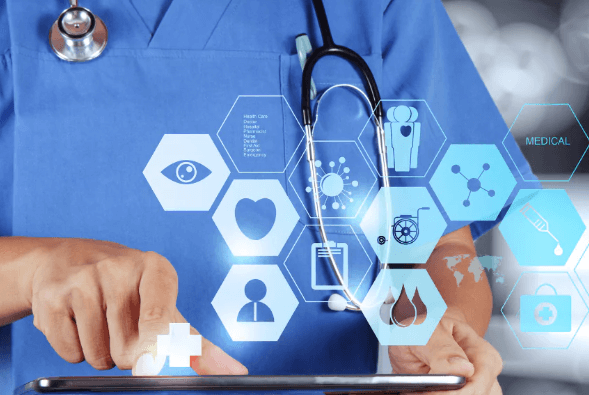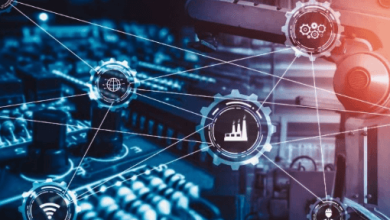Automation in Healthcare: Revolutionizing Patient Care and Operational Efficiency

Introduction
The integration of automation in healthcare is revolutionizing how medical services are delivered, significantly enhancing both patient care and operational efficiency. From automating routine tasks to enabling advanced diagnostics and personalized medicine, automation is rapidly becoming a cornerstone of modern healthcare. This article provides a comprehensive overview of the role of automation in healthcare, examining its benefits, challenges, and the future direction of this transformative trend.
Understanding Healthcare Automation
Healthcare automation refers to the use of technology to perform tasks and processes that traditionally require human intervention. These tasks can range from administrative duties, such as scheduling and billing, to clinical processes, including diagnostics, treatment planning, and patient monitoring. Automation in healthcare aims to reduce errors, improve efficiency, and enhance the quality of care provided to patients.
Automation encompasses a broad range of technologies, including robotic process automation (RPA), artificial intelligence (AI), machine learning, and the Internet of Things (IoT). These technologies work together to streamline operations, reduce manual workloads, and deliver more accurate and timely medical interventions.
See also: Industrial Automation and Industry 4.0: Pioneering the Future of Manufacturing
The Evolution of Automation in Healthcare
Automation in healthcare has evolved significantly over the past few decades. Initially, automation focused on administrative tasks, such as electronic health records (EHRs) and billing systems. Over time, advancements in technology have expanded automation into clinical settings, where it now plays a crucial role in diagnostics, treatment, and patient management.
Key milestones in the evolution of healthcare automation include the development of computerized physician order entry (CPOE) systems, the introduction of robotic surgical systems, and the use of AI in diagnostic imaging. These advancements have paved the way for a more efficient and effective healthcare system that leverages technology to improve patient outcomes.
Benefits of Automation in Healthcare
The benefits of automation in healthcare are vast and multifaceted:
- Enhanced Efficiency: Automation reduces the time required to perform routine tasks, allowing healthcare professionals to focus on more complex and value-added activities.
- Improved Accuracy: Automated systems minimize the risk of human error, particularly in areas like data entry, diagnostics, and medication administration.
- Cost Savings: By streamlining operations and reducing manual labor, automation leads to significant cost reductions for healthcare providers.
- Better Patient Outcomes: Automation supports more accurate diagnoses, personalized treatment plans, and timely interventions, all of which contribute to improved patient outcomes.
These benefits underscore the critical role that automation plays in modernizing healthcare and addressing the challenges faced by the industry.
Types of Automation in Healthcare
Automation in healthcare can be broadly categorized into three main areas:
- Clinical Automation: Involves automating clinical processes, such as diagnostics, treatment, and patient monitoring. Examples include robotic surgeries, automated laboratory testing, and AI-powered diagnostic tools.
- Administrative Automation: Focuses on automating administrative tasks, such as billing, scheduling, insurance claims processing, and inventory management. This area has seen significant advancements with the introduction of RPA and other workflow automation tools.
- Patient-Facing Automation: Encompasses technologies that directly interact with patients, such as telemedicine platforms, automated appointment reminders, chatbots for initial consultations, and remote patient monitoring systems.
Each type of automation addresses specific needs within the healthcare ecosystem, contributing to a more efficient and patient-centric approach to care.
Automation in Clinical Settings
In clinical settings, automation plays a critical role in enhancing the precision and efficiency of medical procedures. Key examples include:
- Automated Diagnostics: AI algorithms are used to analyze medical images, such as X-rays and MRIs, to identify patterns that may indicate diseases like cancer or cardiovascular conditions. This allows for earlier and more accurate diagnoses.
- Robotic Surgeries: Robotic surgical systems, such as the da Vinci Surgical System, enable surgeons to perform complex procedures with greater precision, reducing recovery times and improving patient outcomes.
- Laboratory Automation: Automated systems in laboratories handle tasks such as blood testing, sample analysis, and data reporting, speeding up the diagnostic process and reducing the likelihood of human error.
These applications of automation in clinical settings are revolutionizing how healthcare is delivered, making it more efficient and effective.
Automating Administrative Tasks in Healthcare
Administrative tasks in healthcare are often time-consuming and prone to errors. Automation addresses these challenges by streamlining processes such as:
- Billing and Coding: Automated systems can accurately code medical procedures and generate bills, reducing the risk of errors and ensuring timely reimbursement.
- Scheduling and Appointments: Automation tools can manage appointment bookings, send reminders to patients, and optimize scheduling to minimize wait times and improve patient satisfaction.
- Insurance Claims Processing: Automated systems can process insurance claims quickly and accurately, reducing delays and improving cash flow for healthcare providers.
- Inventory Management: Automation in inventory management ensures that medical supplies and pharmaceuticals are adequately stocked, reducing the risk of shortages and overstocking.
By automating these administrative tasks, healthcare organizations can reduce operational costs and improve overall efficiency.
Patient-Facing Automation Technologies
Patient-facing automation technologies are designed to enhance the patient experience by providing more convenient and personalized care. Examples include:
- Chatbots: AI-powered chatbots can handle routine inquiries, provide medical advice, and triage patients based on their symptoms, freeing up healthcare professionals to focus on more complex cases.
- Telemedicine: Telemedicine platforms enable patients to consult with healthcare providers remotely, reducing the need for in-person visits and expanding access to care, especially in remote areas.
- Automated Patient Monitoring: IoT devices can monitor patients’ vital signs in real-time, alerting healthcare providers to potential issues before they become critical.
These technologies empower patients to take a more active role in their healthcare, while also improving access to and the quality of care.




